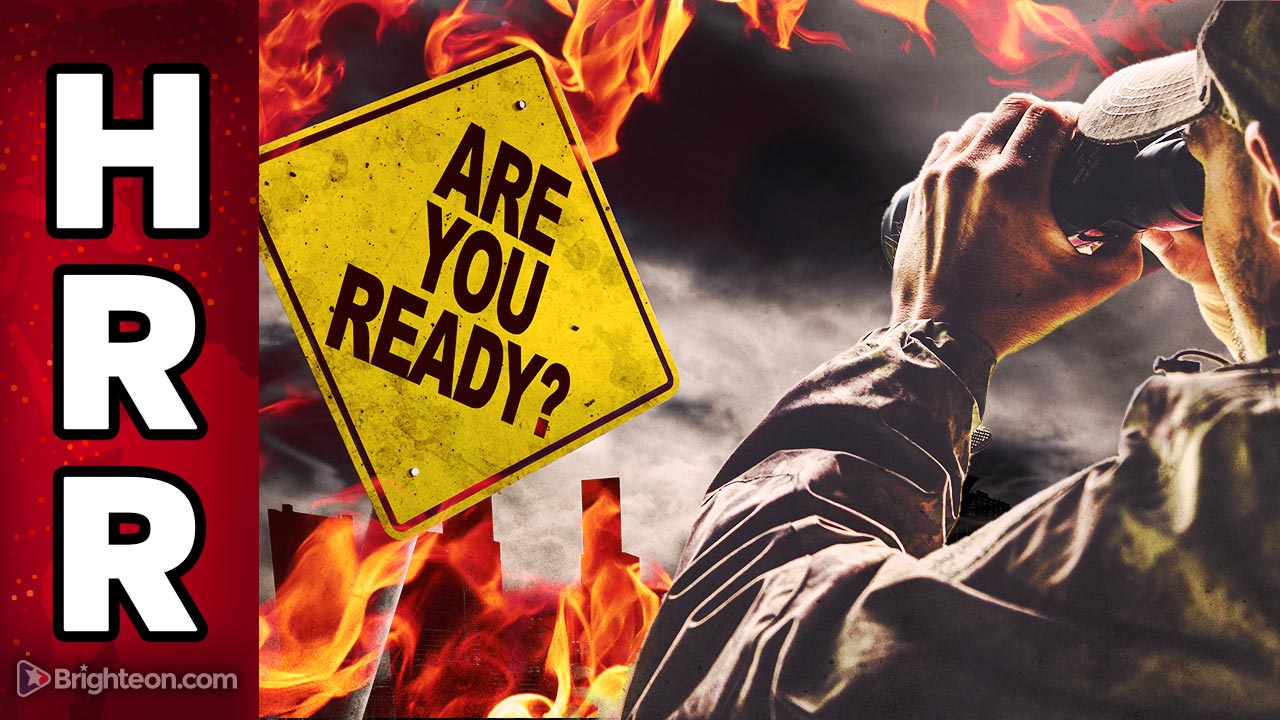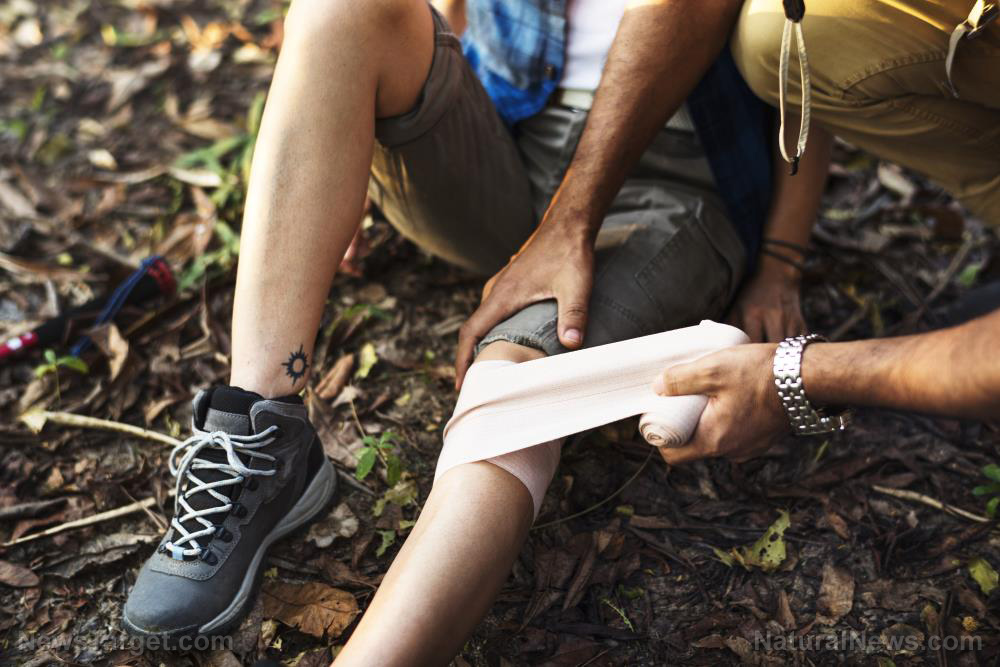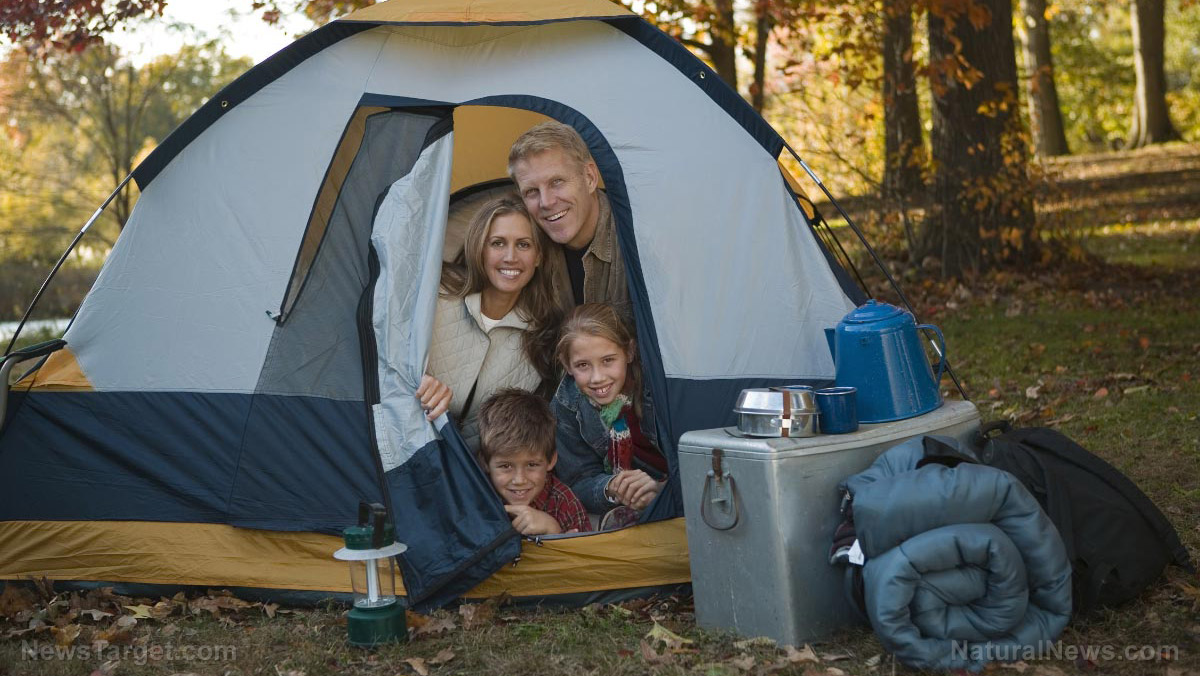Prepping tips and tricks: How to survive cold-weather camping
06/04/2019 / By Mary Miller

Many preppers enjoy camping in the wild outdoors to get in touch with nature. However, camping in cold or extreme weather conditions is nothing like a regular excursion during normal weather. It is important to be prepared for cold weather when camping because being armed with the right equipment and knowledge can mean the difference between life and death. Follow these prepping tips and tricks to improve your chances of survival when camping during cold weather. (h/t to SurvivalSullivan.com)
Check weather conditions and hazards
Before even going on your camping trip, you should know what kind of weather to expect so that you can plan accordingly. Avoid putting yourself in unnecessary danger by always checking your camping area’s local weather conditions and hazards. Hiking trails could be closed off or terrain might become too difficult to travel through. By knowing what kind of weather you’re up against, you can anticipate whether it’s safe to camp outside or not. If the temperatures are within a reasonable range, prepare the appropriate gear.
Make sure you have the proper equipment
Some of the absolute must-have items you need to survive a cold-weather camping trip include a closed-cell foam sleeping pad, a sleeping bag with the appropriate lower-limit temperature rating, a durable tent with grooved wind-resistant tent stakes, nutrient-dense food rations, a stainless steel water bottle and bottle insulator, a first aid kit, and the necessary hygiene items. Other optional supplies may include emergency road flares, flashlights with extra batteries, shovels, tent brushes, reusable straws, Mylar blankets, and matches or lighters. (Related: A basic list of winter survival items you should carry in your car.)
Wear several layers of warm clothing
Your camping outfit should not just be made of thick material. You should wear and pack clothing made out of moisture-wicking fabrics that can efficiently move sweat away from your body and prevent it from saturating your clothes. Synthetic fabrics or natural wool clothing are ideal for your base layers. Avoid wearing silk, cotton, or other cellulose fibers, as these materials do not wick sweat away from your body. Don’t forget to wear wool socks, gloves, and a cold-weather hat. Your clothing should also not be too tight that it restricts circulation in your extremities.
Insulate your tent or shelter
You can insulate your shelter by reducing the ambient space inside. One way to do this is to place your bags and other gear around the tent’s inner perimeter. You can further insulate your tent by creating a DIY radiant barrier. All you have to do is secure a Mylar blanket onto your tent’s ceiling using duct tape. If you are camping with other people, keep your sleeping bags close to each other, so you can conserve body heat.
Build a fire and make the most out of it
Fire-making is one of the most important bushcraft skills every prepper should know. Get the most out of your campfire by focusing as much of the heat toward you as you can. You can do this by creating a reflector behind the fire using wooden logs or your Mylar blanket. Sometimes, you may not find any wood to use as fuel. If building a fire is not possible, you should at least try to bring a portable heater with you.
Learn how to recognize the symptoms of hypothermia
When your core body temperature drops to dangerously low levels, you might risk developing hypothermia. Some signs include shivering, poor coordination, slurred speech, confusion, drowsiness, lethargy, and slowed or shallow breathing. As soon as you recognize these symptoms, try to raise your body temperature immediately with hot beverages, exercise, and added insulation.
Increase your chances of survival when camping in cold weather by visiting Survival.news.
Sources include:
Submit a correction >>
Tagged Under:
bug out, camping, cold weather, emergency, first-aid kit, Gear, hygiene items, hypothermia, Mylar blankets, off grid, outdoors, portable heater, preparedness, prepper, prepping, self sufficiency, SHTF, staying warm, survival, survival skills, survival tools, survivalist, warm clothing, winter gear, winter survival
This article may contain statements that reflect the opinion of the author
RECENT NEWS & ARTICLES
COPYRIGHT © 2018 SURVIVALGEAR.NEWS
All content posted on this site is protected under Free Speech. SurvivalGear.news is not responsible for content written by contributing authors. The information on this site is provided for educational and entertainment purposes only. It is not intended as a substitute for professional advice of any kind. SurvivalGear.news assumes no responsibility for the use or misuse of this material. All trademarks, registered trademarks and service marks mentioned on this site are the property of their respective owners.





















